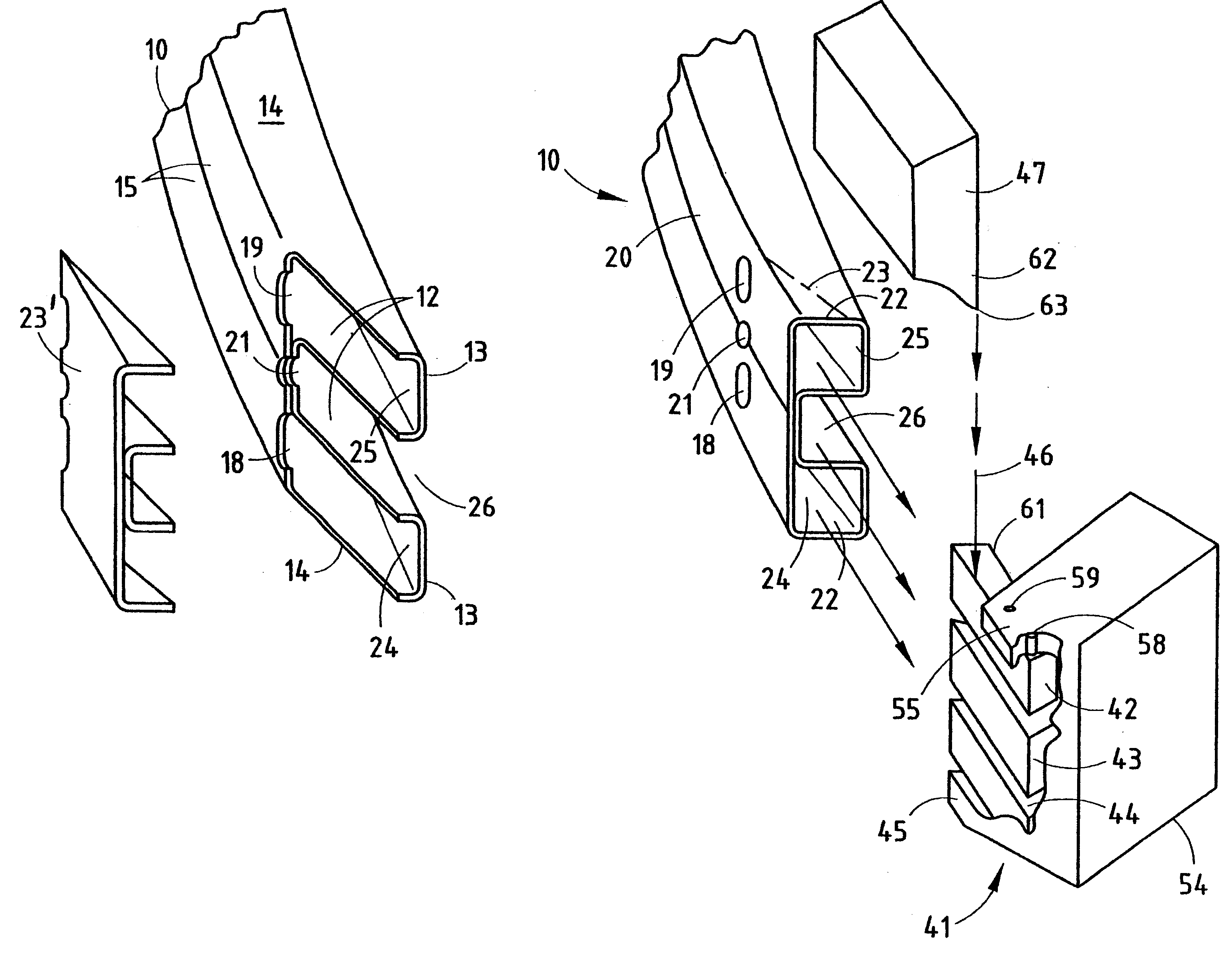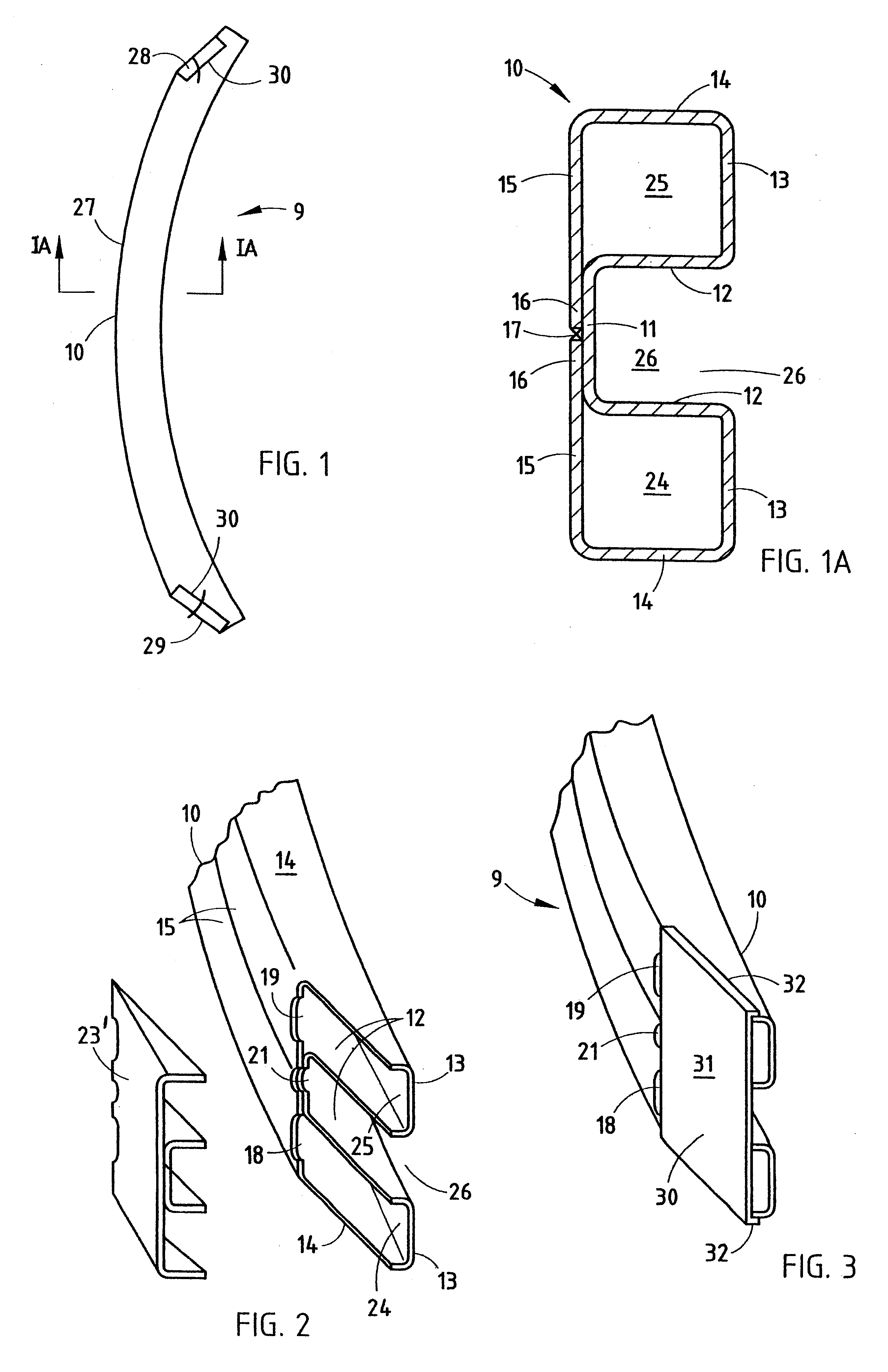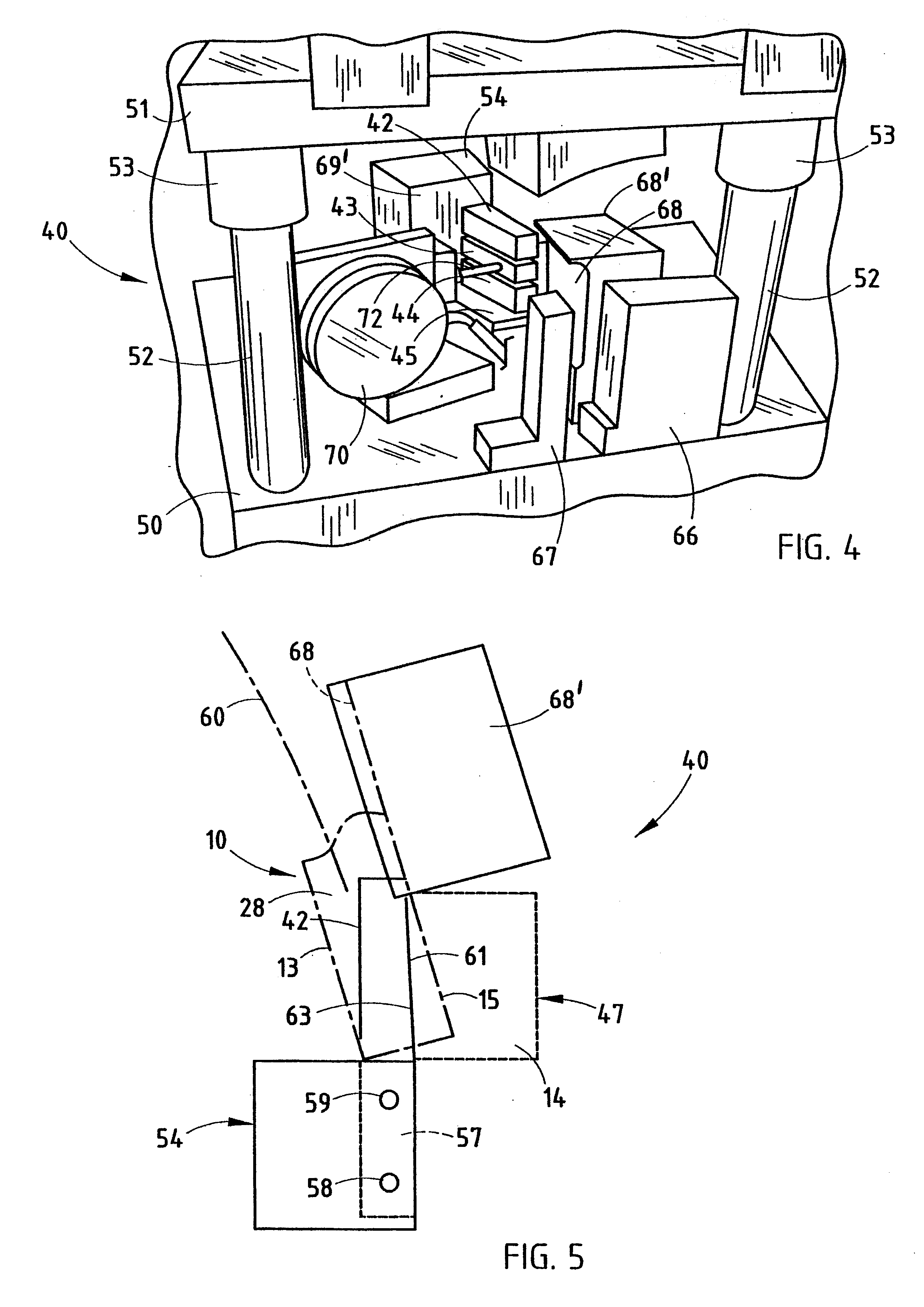Die apparatus for cutting end of bumper bar
a technology of bumper bars and dies, which is applied in the direction of tube shearing machines, metal working apparatuses, manufacturing tools, etc., can solve the problems of inability to adapt the rollforming apparatus and methods, inability to use ultra-high strength materials, and inability to easily deform or cut tubular bumpers. achieve the effect of high strength
- Summary
- Abstract
- Description
- Claims
- Application Information
AI Technical Summary
Benefits of technology
Problems solved by technology
Method used
Image
Examples
Embodiment Construction
For purposes of description herein, the terms "upper", "lower", "right", "left", "rear", "front", "vertical", "horizontal", and derivatives thereof shall relate to the invention as oriented in FIG. 4 with the "front" being in a direction out of the page. However, it is to be understood that the invention may assume various alternative orientations, except where expressly specified to the contrary. It is also to be understood that the specific devices and processes illustrated in the attached drawings and described in the following specification are simply exemplary embodiments of the inventive concepts defined in the appended claims. Hence, specific dimensions and other physical characteristics relating to the embodiments disclosed herein are not to be considered as unnecessarily limiting.
A die apparatus 40 (FIG. 7) includes a lower first die 41 configured to telescopingly engage an end section of a tubular bar 10, such as is used for manufacturing a B-shaped vehicle bumper bar 9 (F...
PUM
| Property | Measurement | Unit |
|---|---|---|
| Thickness | aaaaa | aaaaa |
| Length | aaaaa | aaaaa |
| Angle | aaaaa | aaaaa |
Abstract
Description
Claims
Application Information
 Login to View More
Login to View More - R&D
- Intellectual Property
- Life Sciences
- Materials
- Tech Scout
- Unparalleled Data Quality
- Higher Quality Content
- 60% Fewer Hallucinations
Browse by: Latest US Patents, China's latest patents, Technical Efficacy Thesaurus, Application Domain, Technology Topic, Popular Technical Reports.
© 2025 PatSnap. All rights reserved.Legal|Privacy policy|Modern Slavery Act Transparency Statement|Sitemap|About US| Contact US: help@patsnap.com



